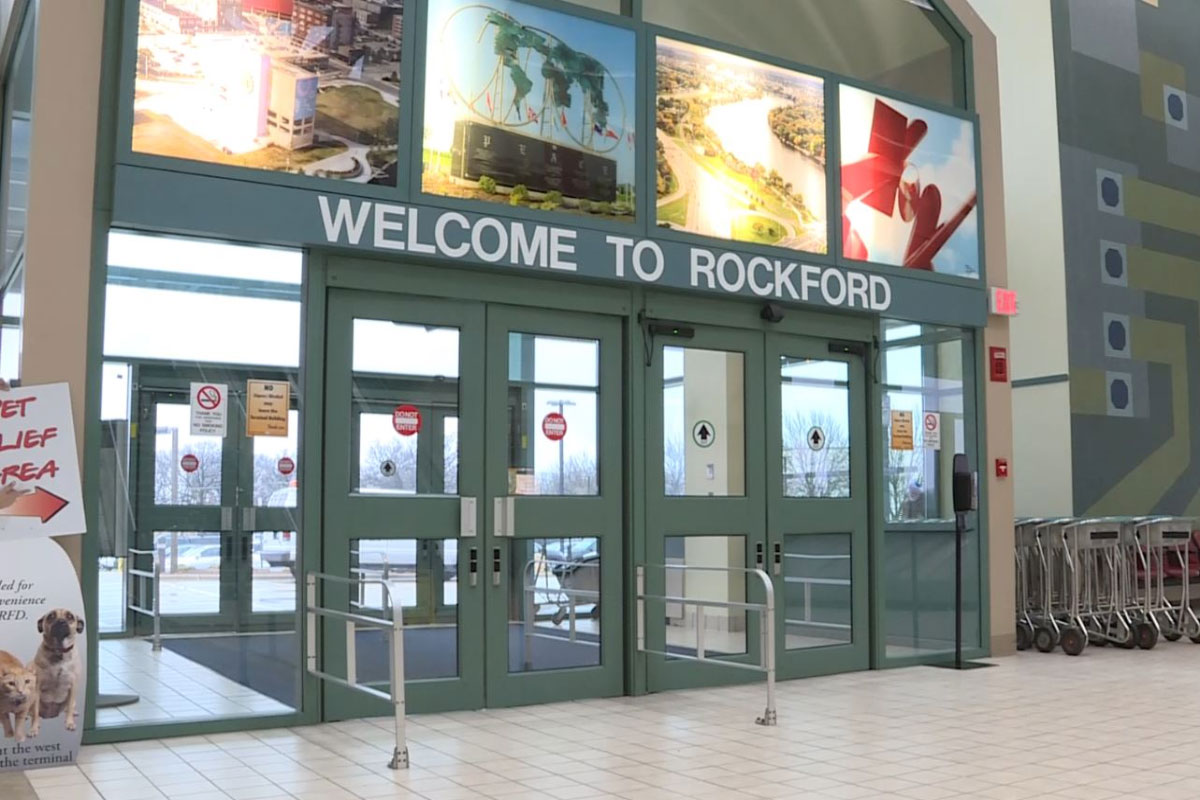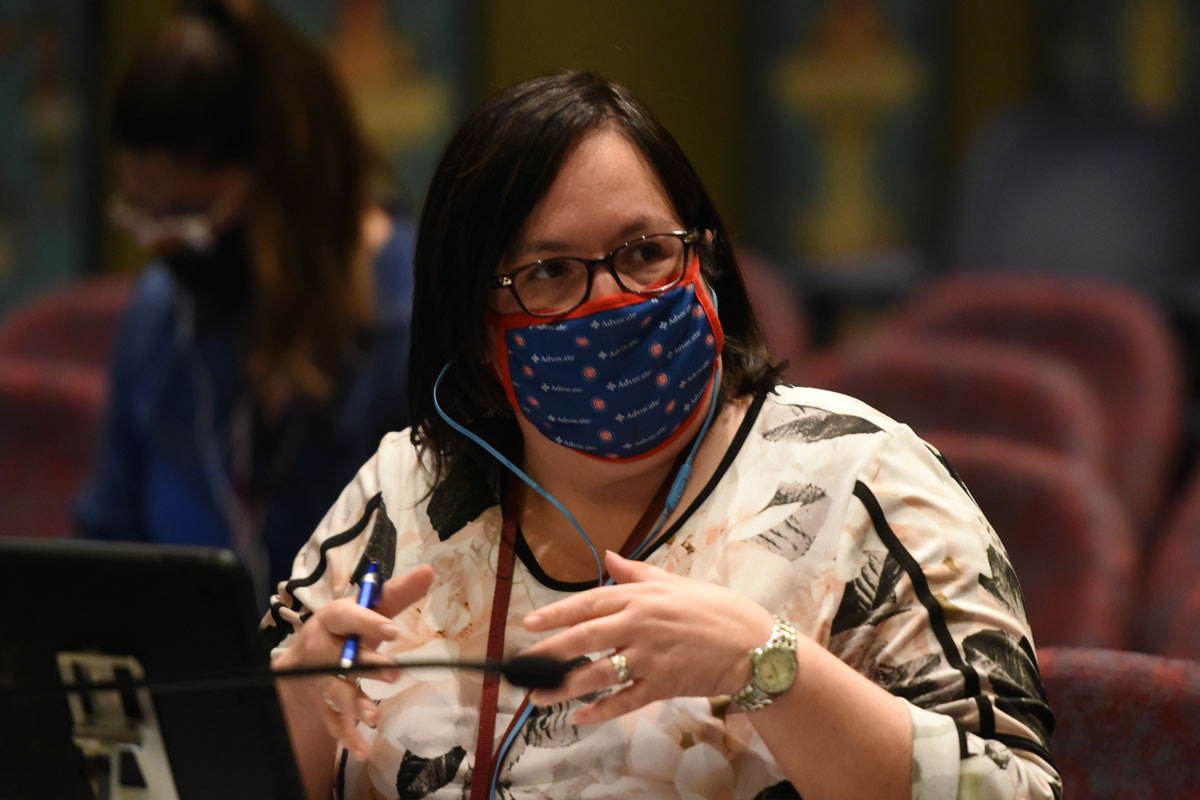- Details
- Category: Senator Laura Fine News

SPRINGFIELD – Patients seeking copies of their medical records to file claims for benefits would no longer have to pay for copies under legislation from State Senator Laura Fine (D-Glenview), which was introduced in the Senate Veterans Affairs Committee Tuesday after passing the House with unanimous bipartisan support.
“Illinoisans seeking benefits should not have to spend their hard-earned money on copies of medical records required to file claims,” Senator Fine said. “These benefit programs are in place to help our most vulnerable populations, and it’s imperative that we make the application process as easy as possible.”
Current law only allows homeless indigent veterans to receive medical records from health care facilities and practitioners at no cost to support claims for veterans’ disability benefits. Senator Fine’s measure would expand eligibility to allow anyone to receive free medical records to support a claim for veterans’ disability, Social Security, Supplemental Security Income, or Aid to the Aged, Blind or Disabled benefits.
Read more: Patients could access their medical records at no cost under Senator Fine measure
Family members of sexual assault survivors would be eligible for protections under Villa legislation
- Details
- Category: Senator Karina Villa News
SPRINGFIELD – Family and household members of survivors of sexual assault could file petitions for civil no-contact orders under legislation from State Senator Karina Villa (D-West Chicago), which was introduced in the Senate Criminal Law Committee Tuesday after passing the House with unanimous support.
“Survivors of sexual assault and harassment deserve to feel safe at home — that means providing protection not just to the survivor, but to their family and loved ones,” Villa said. “Expanding the list of people who can file petitions for no-contact orders is critical to restoring survivors’ peace of mind and helping them move forward.”
- Details
- Category: Senator Doris Turner News
 SPRINGFIELD – State Senator Doris Turner (D-Springfield) is highlighting an opportunity for area airports to apply for funding for improvement projects through the Rebuild Illinois statewide construction program.
SPRINGFIELD – State Senator Doris Turner (D-Springfield) is highlighting an opportunity for area airports to apply for funding for improvement projects through the Rebuild Illinois statewide construction program.
“The Illinois aviation system is one of the largest in the nation,” Turner said. “The new funding will allow airports in Central Illinois and across the state to pay for much-needed repairs that will keep passengers safe and our economy strong. It is my hope that local airports take advantage of this opportunity and apply for funding.”
Gov. JB Pritzker and the Illinois Department of Transportation announced that the Rebuild Illinois program will provide $94 million in funding to improve public airports throughout the state. Through a competitive grant process, airports may submit project proposals for updates, improvements, and extensions of their facilities.
Airports must be for public use and included in the Illinois Aviation System Plan to be eligible for the funding. Applications are due June 14 to be eligible for grants of up to $25 million.
Airports in the Central Illinois area eligible to apply for the funding include the Abraham Lincoln Capital Airport, Decatur Airport, Litchfield Municipal Airport and Taylorville Municipal Airport.
Application information is available by visiting IDOT’s Airport Improvement Program page. Awards are anticipated to be announced later this year.
- Details
- Category: Senator Steve Stadelman News
 SPRINGFIELD – State Senator Steve Stadelman (D-Rockford) is highlighting a funding opportunity that will help local airports expand and increase economic development through the Rebuild Illinois statewide construction program.
SPRINGFIELD – State Senator Steve Stadelman (D-Rockford) is highlighting a funding opportunity that will help local airports expand and increase economic development through the Rebuild Illinois statewide construction program.
“I’m thrilled the state is investing in our local airports,” Stadelman said. “This funding would help airports like Chicago Rockford expand while also boosting our local economy.”
The Illinois Department of Transportation announced that the Rebuild Illinois program will provide $94 million in funding to improve public airports throughout the state. Through a competitive grant process, airports can submit project proposals for updates, improvements, and extensions of their facilities.
Airports must be for public use and included in the Illinois Aviation System Plan to be eligible for the funding. Applications are due June 14 to be eligible for grants of up to $25 million.
Application information is available by visiting IDOT’s Airport Improvement Program page. Awards are anticipated to be announced later this year.
- Details
- Category: Senator Cristina Castro News
 SPRINGFIELD – Following the release of the second Maternal Morbidity and Mortality Report by the Illinois Department of Public Health, State Senator Cristina Castro (D- Elgin) has spearheaded a measure to reduce maternal mortality and support new mothers – especially Black mothers – throughout the state.
SPRINGFIELD – Following the release of the second Maternal Morbidity and Mortality Report by the Illinois Department of Public Health, State Senator Cristina Castro (D- Elgin) has spearheaded a measure to reduce maternal mortality and support new mothers – especially Black mothers – throughout the state.
“The vast majority of postpartum deaths are preventable, so we need to be doing all we can to minimize those deaths,” said Castro, who has been an ongoing advocate for reducing postpartum morbidity. “This legislation will help all pregnant and postpartum mothers, but it will also work to reduce the racial disparities in maternal mortality.”
According to Illinois Department of Public Health, more than four out of five pregnancy-related deaths are preventable, and Black women are three times more likely to die from pregnancy-related conditions than white women. Mental health conditions, including substance use disorders, are the leading cause of pregnancy-related death.
Senate Bill 967 would provide support for pregnant and new mothers for pregnancy-related conditions, including mental health and substance use disorders by requiring private insurance plans to cover postpartum complications up to one year after delivery among other requirements. It would also require hospitals to have a written policy on the management of the leading causes of maternal mortality, which would include guidance from IDPH on best practices in dealing with pregnancy and postpartum complications. Additionally, it would require Medicaid to cover multiple postpartum visits to encourage new mothers to attend.
“This year, Illinois became the first state to expand Medicaid coverage for postpartum mothers,” Castro said. “This legislation would do even more to protect and support new mothers, especially those who are disproportionately impacted by inequities in the health care system.”
SB 967 passed the Senate Health Committee and now moves to the floor for a full vote.
- Details
- Category: Senator Scott Bennett News
 CHAMPAIGN – State Senator Scott Bennett (D-Champaign) is highlighting an opportunity for area airports to apply for funding for improvement projects through the Rebuild Illinois statewide construction program.
CHAMPAIGN – State Senator Scott Bennett (D-Champaign) is highlighting an opportunity for area airports to apply for funding for improvement projects through the Rebuild Illinois statewide construction program.
“Even though our state serves as a hub for transit, our airports have been in a tough spot as a result of the pandemic,” Bennett said. “With this funding, airports in Central Illinois and across the state will have the opportunity to make critical updates that will improve safety for all passengers. I invite all of our local airports to apply for funding as soon as possible.”
Gov. JB Pritzker and the Illinois Department of Transportation announced that the Rebuild Illinois program will provide $94 million in funding to improve public airports throughout the state. Through a competitive grant process, airports may submit project proposals for updates, improvements, and extensions of their facilities.
Airports must be for public use and included in the Illinois Aviation System Plan to be eligible for the funding. Applications are due June 14 to be eligible for grants of up to $25 million.
Airports in the Champaign area that are eligible to apply for the funding include University of Illinois Willard Airport and Rantoul National Aviation Center (Frank Elliott Field).
Application information is available by visiting IDOT’s Airport Improvement Program page. Awards are anticipated to be announced later this year.
- Details
- Category: Senator Patricia Van Pelt News
 SPRINGFIELD – A measure sponsored by State Senator Patricia Van Pelt (D-Chicago) to permanently establish the Call4Calm text line to support Illinois residents' mental health needs passed committee Tuesday, falling in line with Mental Health Awareness Month.
SPRINGFIELD – A measure sponsored by State Senator Patricia Van Pelt (D-Chicago) to permanently establish the Call4Calm text line to support Illinois residents' mental health needs passed committee Tuesday, falling in line with Mental Health Awareness Month.
“Call4Calm was a great initiative during the COVID-19 pandemic, and can still benefit those who struggle with their mental health even after this pandemic is over,” Van Pelt said. “Mental health outcomes are more concerning than ever before due to the public health crisis, and this text line is an essential outlet.”
Read more: Van Pelt Call4Calm Bill passes Human Services Committee
- Details
- Category: Senator Christopher Belt News
 SPRINGFIELD – A measure sponsored by State Senator Christopher Belt (D-Centreville) that would require the Illinois Department of Transportation to provide funding to create additional infrastructure in urban areas passed committee on Tuesday.
SPRINGFIELD – A measure sponsored by State Senator Christopher Belt (D-Centreville) that would require the Illinois Department of Transportation to provide funding to create additional infrastructure in urban areas passed committee on Tuesday.
The measure would require IDOT to fully fund all aspects of construction projects on state roadways, including infrastructure for pedestrians walking and bicycling within one mile of an urban area. Additionally, the measure requires IDOT to complete any of these unfinished infrastructure projects in municipalities with a population of 1,000 or more.
Read more: Belt measure would help build sidewalks along state roads
More Articles …
Page 487 of 760
